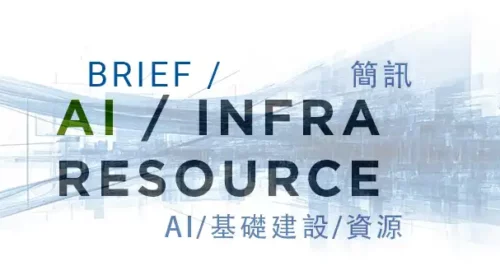The auto trader-turned-bitcoin miner has minted 2,944.8 bitcoins since entering the business last November, but has yet to sell any of those despite recent market volatility
Key Takeaways:
- Cango owned 2,944.8 bitcoins at the end of April, as its costs for producing the cryptocurrency rise due to growing competition from new and existing miners
- The bitcoin miner expects to install 18 EH of new capacity by the end of July, bringing its global total to 50 EH spread across four continents
By Doug Young
Chinese companies are no strangers to the “cattle effect,” which sees everyone rush into the latest hot sector, aiming to get a piece of the action. Cango Inc. (CANG.US) is learning that lesson now, as the recently minted bitcoin miner discovers that a growing pool of rivals chasing a limited pool of assets ultimately results in falling returns.
Still, the global supply of bitcoin is still more than large enough to keep quite a few people employed, including Cango, which entered the mining business last November in a surprise pivot away from its legacy businesses in auto financing and trading. Cango’s latest quarterly results, released on Wednesday, showed how the effects of growing competition are eating into the productivity of its mining operation.
The company also provided some of the most detailed information to date on its global footprint, which includes mining facilities on four continents. Such diversity is part of its asset-light model that Cango believes is one of its most important strengths, giving it the flexibility to quickly add capacity and adjust its business mix by renting space in mining facilities owned by third parties. While such a strategy carries greater flexibility, it also tends to come with higher costs, especially for electricity, than the self-owned facilities used by many of its rivals.
Cango also revealed that it won’t be an active bitcoin trader by selling its assets whenever the market gets wobbly. Reflecting that, the company revealed it has yet to sell any of the bitcoins it has mined since entering the business late last year, with its bitcoin holdings totaling 2,944.8 at the end of April, according to an announcement earlier this month on its April output.
“Given our strong confidence in the bitcoin’s long-term value appreciation potential, we have adopted a ‘Mine and Hold’ strategy, prioritizing both self-mining and long-term holding,” said Cango CEO Lin Jiayuan in the company’s latest quarterly results. “Looking ahead, we will continue to consolidate and optimize our existing computing resources to maximize efficiency while actively exploring high-quality M&A opportunities to further scale our operations and deliver long-term value to all stakeholders.”
Cango’s “mine and hold” strategy got one of its biggest tests in the first quarter, as the cryptocurrency’s price stumbled starting in March from previous highs of more than $100,000 per bitcoin. The currency fell steadily from there to as low around $76,000 last month, before regaining strength to return to the $100,000 level.
Such volatility will inevitably affect the value of Cango’s bitcoin holdings, and, as a result, its overall performance. The company cited the March sell-off as the primary factor that pushed it into the red on an operating basis during the first quarter, as it reported a 155.5 million yuan ($21.6 million) operating loss for the period versus a 74.2 million yuan operating profit a year earlier.
On the bottom line, the company also reported a net loss of 207.4 million yuan for the quarter, reversing a 90 million yuan profit a year earlier. Most of the loss was due to unrealized losses related to fair value changes in its bitcoin holdings during the cryptocurrency’s March downturn. It remained profitable on an adjusted EBITDA basis, though its adjusted EBITDA also fell to 27.6 million yuan in the first quarter from 108.4 million yuan a year earlier.
None of that is really too important for Cango, at least not right now, since the company’s cash and short-term investments have soared recently due to its growing bitcoin holdings. The company said it had 7.7 billion yuan worth of cash and short-term investments at the end of March, or more than triple the 2.5 billion yuan it had just three months earlier.
Falling returns
As we’ve previously noted, Cango isn’t the only company rushing to take advantage of record bitcoin prices. The resulting gold rush has resulted in a huge rise in the number of miners and their deployed mining capacity, including a sudden surge in the global hashrate for bitcoin mining in April that was the second-biggest monthly increase ever, Cango said.
As global interest in the cryptocurrency has grown, the number of bitcoins Cango is mining each day is trending generally downward. Using its current 32 EH of capacity, the company was mining 18.4 bitcoins each day in December, its first full month of mining. But that number had slipped to just 15.7 per day in April, as the company harvested far smaller rewards for roughly the same amount of effort.
The falling output caused the company’s actual cost of mining each bitcoin, excluding depreciation of mining machines, to rise to $70,602.10 during the latest quarter, up from $67,769.90 in the fourth quarter. Both figures are well below the industry average cost of about $94,000 per bitcoin as of mid-May, according to the website MacroMicro. But Cango’s per-coin costs are also generally higher than those of some large peers like Mara (MARA.US), which use a more capital-intensive but also more efficient model that sees them build and operate their own facilities.
To offset the diminishing returns on its existing capacity, Cango is in the process of installing an additional 18 EH of new capacity that will bring its total to 50 EH, making it the world’s second largest independent miner. The company has already procured the necessary mining machines, and said it expects to have them installed by the end of July.
Cango didn’t reveal where exactly that new capacity will be located. But it provided some information on its current mining footprint, showing the U.S. and East Africa are its main production hubs, accounting for 38% and 37% of its capacity, respectively. Oman is its next biggest location with 15%, followed by Paraguay at 9% and Canada at 1%.
As its mining operation has matured, Cango reported revenue of 1.1 billion yuan in the first quarter of 2025, nearly double the 668 million yuan it reported in last year’s fourth quarter when it first started mining bitcoin, and light years ahead of the 64.4 million yuan it recorded in the first quarter of 2024. Nearly all of its latest quarterly revenue, about 1 billion yuan, came from its bitcoin operation, as it mined 1,541 bitcoins during the quarter.
The company also gave out an update on its recently launched car export business, which it is selling as part of a deal announced last month to dispose of its original China-based businesses. It said that since the launch of its AutoCango last year, the export-oriented service’s website has attracted 2.37 million visits, has more than 290,000 users and has listings for more than 480,000 used cars.
The Bamboo Works offers a wide-ranging mix of coverage on U.S.- and Hong Kong-listed Chinese companies, including some sponsored content. For additional queries, including questions on individual articles, please contact us by clicking here
To subscribe to Bamboo Works free weekly newsletter, click here





